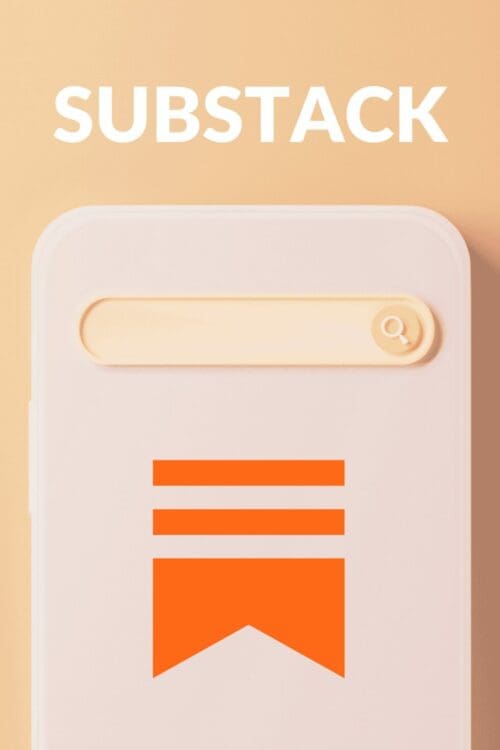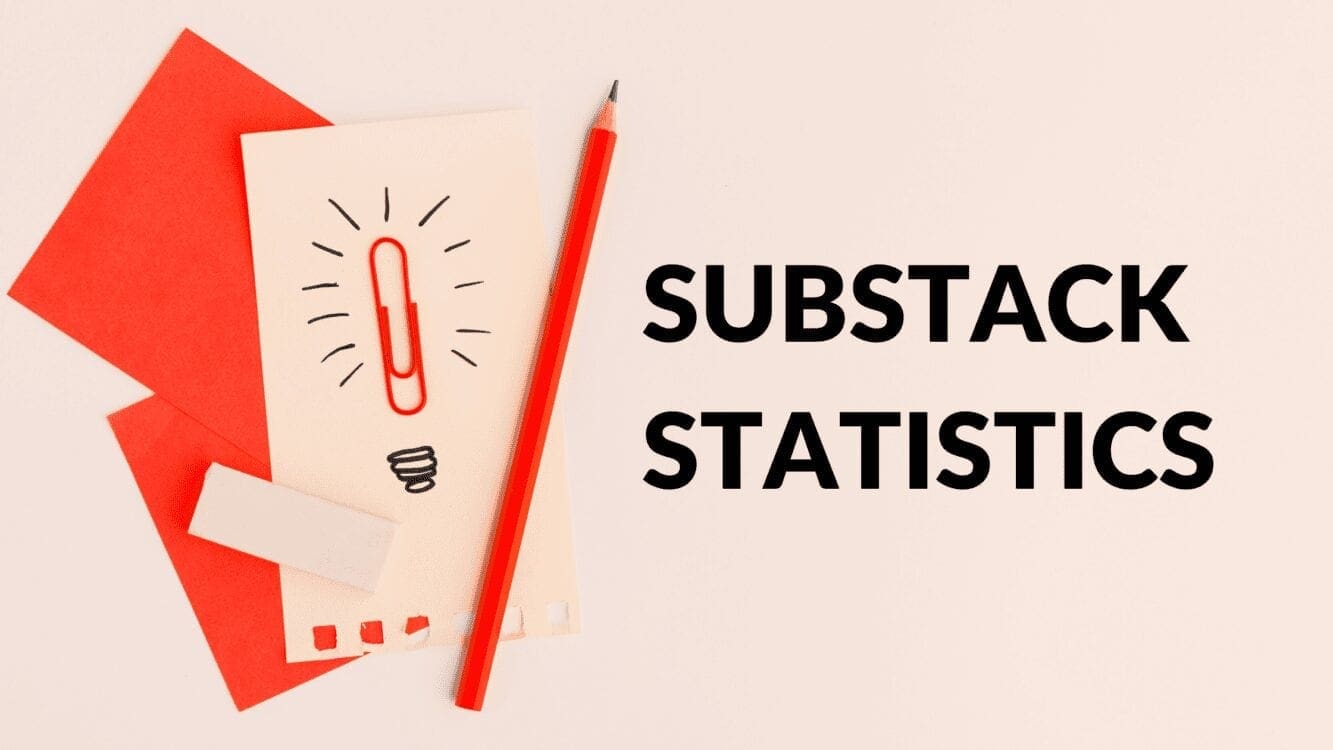Substack
Review
Substack makes it simple for a writer to start an email newsletter that makes money from subscriptions. Substack provides web and newsletter publishing tools that are purpose-built for paid subscriptions. Substack is popular with many writers because it’s an all-in-one solution for writers looking to monetize their online content. Substack also allows audio creators the ability to charge and distribute their podcasts through Substack’s newsletter delivery system.
Substack Course
Learn how to create, operate, and monetize your own Substack newsletter.
Substack Facebook Group
Join our Facebook group to chat with other Substack writers and ask questions.
Substack Newsletter
Subscribe to Blogging Guide’s newsletter to gain access to premium Substack writing tips.
- Ease of Monetization
- Platform Stability
- Integration with Self-Hosted Blog
- Publishing Tools
- Writer Support
Platform Details
Name: Substack
Date Founded: 2017
Website: Substack.com
Substack was founded in 2017 by Christopher Best, Hamish McKenzie, and Jairaj Sethi. The platform makes it simple for a writer to start a subscription-based email newsletter. In 2019, Substack raised
Substack FAQs
This section contains answers to some of the most frequently asked questions about Substack.
What is Substack?
Substack makes it simple for a writer to start an email newsletter that makes money from subscriptions. Writers get a content management system (CMS) built for publishing email newsletters, integrated payments through Stripe, and a website that can host free and subscriber-only content.
Substack was founded in 2017 by Chris Best (former chief technology officer of messaging app Kik), former journalist and Tesla alum Hamish McKenzie, and developer Jairaj Sethi. Substack introduced paid podcasts with the launch of a tool for audio publishing in 2019. In 2020, Substack introduced group publishing tools, allowing multiple writers to collaborate on a publication.
Who can write on Substack?
Anyone can write on Substack. There are amateur writers who share their random thoughts, and well established journalists who write exclusive investigative content that would otherwise be featured in The Wall Street Journal.
How do you create a subscription Substack newsletter and charge readers?
Substack makes it easy to both create a newsletter and to charge readers for access to this newsletter. Click here for detailed steps outlining how to create your own subscription newsletter, in just a few minutes.
What fees does Substack charge writers?
Substack does not charge any initial fees to create your newsletter. They do take a 10% cut of revenue, should you decide to enable monetization of your newsletter, and successfully attract paid subscribers. Writers also should factor in the fees charged by Stripe, Substack’s payment processor, which are 2.9% plus 30 cents per transaction.
How much money do top Substack writers earn?
As with most digital publishing platforms, the answer varies significantly based on the number of paid subscribers and the subscription fee (which is set by the author). Top earning Substack writers generally earn between $5K per month and $30K per month. However, these newsletters are successful outliers. For more detailed examples of verified Substack earnings, click here.
How much should you charge for your Substack newsletter?
The optimal price of your newsletter depends on a number of factors, including how much content you have/plan to publish, what is included with a subscription to your newsletter, and who your target audience is. It also depends on the length of the subscription. Typically, annual subscriptions are offered at a 10%-20% discount when compared to the monthly subscription price. The minimum that Substack allows you to charge is $5 per month or $30 per year. Generally, most monthly subscriptions range from $5 to $15 per month.
What is the difference between Substack and other similar platforms?
Substack vs. Medium
Substack and Medium may serve an overlapping user base, but the actual offering of each platform are quite unique. Medium allows bloggers to easily create, publish and monetize their blog. Substack allows users to create a subscription-based email newsletter and charge readers for access to this content. Learn more about the differences between Medium and Substack.
Medium vs. Revue
Substack and Revue may both serve newsletter creators, but the actual offering of each platform are quite unique. Substack is an email newsletter platform designed for small publishers who want to monetize their content. Revue is a Dutch start-up company, branding itself as an ‘editorial newsletter platform’. Just like Substack, Revue also offers the option to easily monetize your content by adding the option of paid subscriptions. It is aimed at small companies, start-ups and writers who lack time and resources to create extensive HTML templates for their newsletters. Learn more about the differences between Substack and Revue.
Medium vs. Patreon
While Substack has recently opened up to podcasters and other audio content creators, its main target market is still people who write and publish newsletters. It offers a simplified newsletter writing experience that allows users to focus on creating quality content. The editor has all the necessary tools to create a clean and logical post, and then some. The writer-centric platform also makes publishing a straightforward experience, with options to publish only to the web or send email and publish on the web. As it compares to Patreon, there are many writers and journalists who use it to create and share their content. But compared to Substack, it is more of a multi-purpose platform than one specifically for writers. Video creators, musicians, podcasters, course creators, gaming creators, and other fields are also represented on the site. Learn more about the differences between Substack and Patreon.
Substack Alternatives
While Substack does a decent job creating an easy to use subscription-based newsletter, there are several other services essentially offering the same thing. Learn more about the various alternatives to Substack.
SUBSTACK EARNING POTENTIAL
The amount of money Substack writers can earn varies significantly based on the number of paid subscribers and the subscription fee (which is set by the author). Top earning Substack writers generally earn between $5K per month and $30K per month. However, these newsletters are successful outliers. For more detailed examples of verified Substack earnings, click here.
Below is an annotated chart of top earnings newsletters on Substack. While we don’t know the precise earnings of these newsletters, we can multiply the monthly subscription cost x the approximate # of paid subscribers. This gives us the minimum monthly earnings of each newsletter.
For more detailed examples of verified Substack earnings, read our article on Substack newsletter earnings:
Substack Infographics
SUBSTACK KEY FEATURES
Free Subscription Newsletter
Substack offers a free subscription-based newsletter, that makes it easy to charge them for access.
Free Blog
Posts on Substack can be posted, automatically, through your newsletter, as well as on your blog.
Free Email Marketing System
Substack offers writers a free email marketing system, allowing them to easily message their readers.
Substack Pros and Cons
SUBSTACK PROS
There are many advantages to publishing on Substack. Substack takes something fairly complex, creating a subscription based newsletter, and makes the process simple and free.
Whether you are a writer who is considering creating a Substack newsletter, or you are an experienced blogger who is debating exploring other platforms, Substack has a lot to offer.
Clean design
Newsletter renders well on mobile devices
Allows authors to "own" their email list
Authors can choose their own pricing
Free subscription newsletter, blog, CMS, and email address
Built in podcast recording and publishing tool
SUBSTACK CONS
While Substack is an amazing platform, there are a number of disadvantages. Not all of these disadvantages are unique to Substack specifically, but they are still worth mentioning.
Most of the disadvantages center around the limited features available for Substack newsletters, the fees Substack collects, and the lack of advanced content discovery tools for readers.
Higher fees than competitors
Lack of content discovery tools
Limited data analytics
Very limited integrations with related tools and applications
Rigid pricing tiers
Limited newsletter customization options
Limited customer service support
Substack Newsletter Formatting
If you are a new writer on Substack, or an especially curious one like me, you probably have looked at ways to improve the formatting of your Substack articles.
Substack has published a couple articles on article formatting, but many are useless to new writers. These articles are typically outdated, lack proper visuals to demonstrate how to use various features, and even if there is quality information, it is usually distributed across a seemingly random array of articles.
To learn more about Substack article formatting, read our comprehensive guide. To learn more about the formatting options included in the Substack editor, hover over the purple + icons below:

Click the “B” icon to create bold text.
Click here to create italicized text.
Click the “<>” toggle code font.
Click the chain link icon to create a hyperlink.
Click the image icon to insert an image.
Click the buttons icon to insert a preformatted or custom button.
Click the style button to change the text header.
Click the style button to adjust the header level.
Click the bulleted list icon to create a bulleted list.
Click the “12” icon to create a numbered list.
Click the quotation marks to create a block quote.
Click the “AB” icon to insert a footnote.























